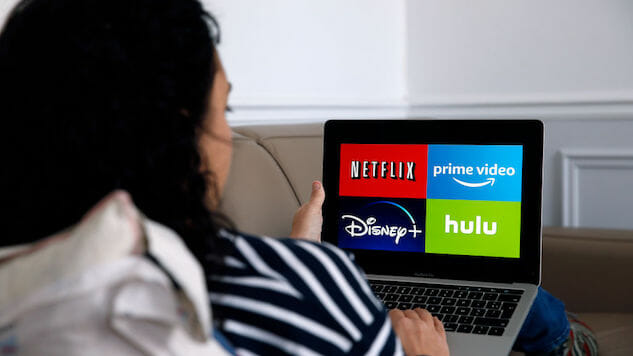Is 2020 the Year the Peak TV Bubble Will Burst?
Can we make it so?
Photo Courtesy of Getty Images TV Features
As we make the turn into 2020, perhaps Andy Warhol’s iconic prediction needs updating: Instead of everyone having 15 minutes of fame in the future, we’ll all have our own original scripted TV series.
In the last few years, FX has put together annual research on the Peak TV boom, which in 2018 revealed that the number of scripted TV series (dramas, comedies, and limited series) was 495—and that’s not even including reality or news programs. According to THR, the first half of 2019 was already well on track to crest that total, but we’ll have the data soon to know by just how much. If those numbers don’t seem overwhelming to you, consider this: The number of television shows in 2018 increased 85% since 2011.
The biggest change since 2011 has been, of course, Netflix and streaming as a whole. And that is where the biggest gains have been. Cable channels multiplied into mega packages of several hundred options, each with their own catalogue of programming well before this, but the advent of subscription on-demand services (commercial-free, in most cases) really changed the game. The second component of that (also brought on by Netflix) is the binge model of consumption, which has its benefits when catching up with or rewatching older series, but becomes exhausting when one feels compelled to instantly binge anywhere from 8 to 13 episodes in a weekend to stay ahead of spoilers.
Still, there are positives to Peak TV; it has allowed for more diverse content from more creators, and more opportunities across the board. But who is actually watching all of these shows? There are more truly great series than ever, and fewer people to find them. As my Assistant Editor Amy Amatangelo reminded me recently, there were a surprising number of big adaptations or legacy series that nobody cared about this year, including the final season of Orange Is the New Black and the start of His Dark Materials on HBO. I had already forgotten that Stranger Things aired this year, or even that Game of Thrones ended (!) That is what Peak TV does to a person. There is just too much.
So when will it end, and how? When Disney+ and AppleTV entered the arena in November, they were considered heralds of sweeping changes in the TV landscape. That didn’t happen immediately of course, but they probably are the harbingers of a massive merging of these multitudes of streaming companies. In the next few years, we could see these mega corporations buying up the small or mid-major streamers (or majors!) and consolidating into perhaps four or five companies. Niche services like Shudder, VRV, CuriosityStream, AcornTV could all be bought out by Amazon or WarnerMedia, Disney+ could winnow and absorb Hulu, and AppleTV (with its aspirations to be a one-stop shop for all of your viewing needs) could buy the company that is currently making a case that it’s already doing just that: Netflix. Ultimately, what does this lead to? Basically, the reinvention of cable, except instead of perusing your 500 channels and stumbling across an afternoon movie or a beloved sitcom you go and do a targeted search for that movie or that sitcom (if you can remember they exist).
But whether the shift from a traditional cable model to on demand streaming is good or bad, ultimately, I have no idea. (Or who it’s really good or bad for—consider that a loss of broadcast or PBS also means a loss of free educational, news-based, or family programming). But accessibility through streaming isn’t what helps TV shows get watched; if that were true, then Facebook’s original platform, FacebookWatch (which is free and part of one of the biggest social networks in the world) would have the most-watched programming out there. It doesn’t.
There are finite viewers for these series, and eventually, even companies who don’t share their viewing numbers and whose models are based on subscriptions rather than ads will reach a point where there’s too much for people to keep track of. It’s already overwhelming even for those whose job it is to curate these massive amount of content. I watched at least one episode of over 120 series this year as part of my job (and general love of TV), which is an incredible amount and yet still only a fraction of the whole. How many does the average person see? How many can we reasonably handle?
Perhaps 2020 will not be the year that studios get the hint, but one where we have to simply acknowledge our own exhaustion. Not every TV show can be covered, and not every great series can be watched. Make time for what you enjoy, including the old classics, and remember that even self-styled “serious” TV shows should also have some amount of humor and joy. And if you are a creator or part of the production of a TV show, may your series get watched in the coming year. We’re doing our best to highlight them, but the truth is that Peak TV just cannot be sustained much longer for those in media or for viewers at home.
Allison Keene is the TV Editor of Paste Magazine. For more television talk, pop culture chat and general japery, you can follow her @keeneTV
For all the latest TV news, reviews, lists and features, follow @Paste_TV.